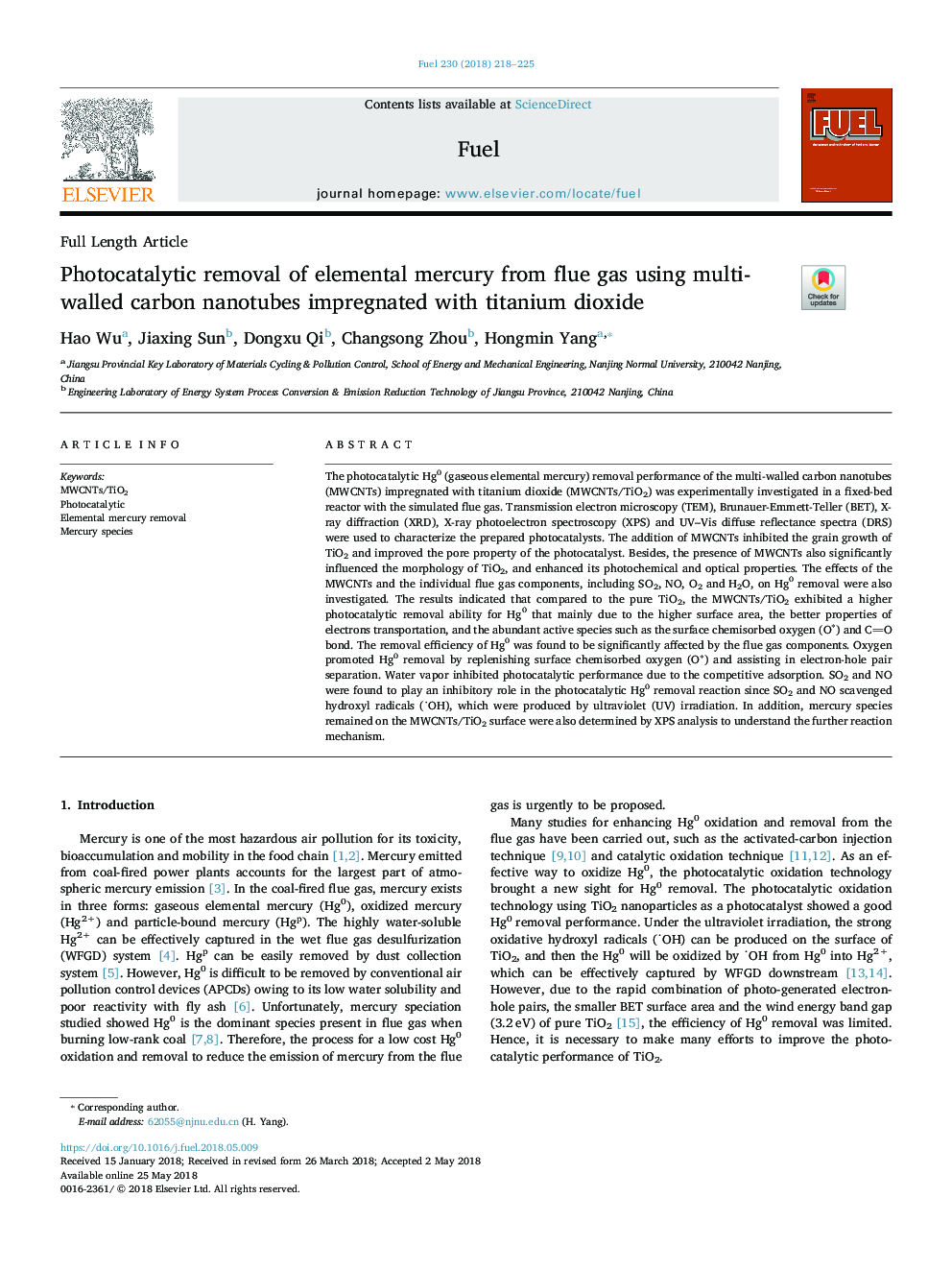| کد مقاله | کد نشریه | سال انتشار | مقاله انگلیسی | نسخه تمام متن |
|---|---|---|---|---|
| 6630627 | 1424934 | 2018 | 8 صفحه PDF | دانلود رایگان |
عنوان انگلیسی مقاله ISI
Photocatalytic removal of elemental mercury from flue gas using multi-walled carbon nanotubes impregnated with titanium dioxide
ترجمه فارسی عنوان
حذف فوتوکاتالیستی جیوه عنصری از گاز دودکش با استفاده از نانولوله های کربنی چندجدی آغشته به دی اکسید تیتانیوم
دانلود مقاله + سفارش ترجمه
دانلود مقاله ISI انگلیسی
رایگان برای ایرانیان
موضوعات مرتبط
مهندسی و علوم پایه
مهندسی شیمی
مهندسی شیمی (عمومی)
چکیده انگلیسی
The photocatalytic Hg0 (gaseous elemental mercury) removal performance of the multi-walled carbon nanotubes (MWCNTs) impregnated with titanium dioxide (MWCNTs/TiO2) was experimentally investigated in a fixed-bed reactor with the simulated flue gas. Transmission electron microscopy (TEM), Brunauer-Emmett-Teller (BET), X-ray diffraction (XRD), X-ray photoelectron spectroscopy (XPS) and UV-Vis diffuse reflectance spectra (DRS) were used to characterize the prepared photocatalysts. The addition of MWCNTs inhibited the grain growth of TiO2 and improved the pore property of the photocatalyst. Besides, the presence of MWCNTs also significantly influenced the morphology of TiO2, and enhanced its photochemical and optical properties. The effects of the MWCNTs and the individual flue gas components, including SO2, NO, O2 and H2O, on Hg0 removal were also investigated. The results indicated that compared to the pure TiO2, the MWCNTs/TiO2 exhibited a higher photocatalytic removal ability for Hg0 that mainly due to the higher surface area, the better properties of electrons transportation, and the abundant active species such as the surface chemisorbed oxygen (Oâ) and CO bond. The removal efficiency of Hg0 was found to be significantly affected by the flue gas components. Oxygen promoted Hg0 removal by replenishing surface chemisorbed oxygen (Oâ) and assisting in electron-hole pair separation. Water vapor inhibited photocatalytic performance due to the competitive adsorption. SO2 and NO were found to play an inhibitory role in the photocatalytic Hg0 removal reaction since SO2 and NO scavenged hydroxyl radicals (OH), which were produced by ultraviolet (UV) irradiation. In addition, mercury species remained on the MWCNTs/TiO2 surface were also determined by XPS analysis to understand the further reaction mechanism.
ناشر
Database: Elsevier - ScienceDirect (ساینس دایرکت)
Journal: Fuel - Volume 230, 15 October 2018, Pages 218-225
Journal: Fuel - Volume 230, 15 October 2018, Pages 218-225
نویسندگان
Hao Wu, Jiaxing Sun, Dongxu Qi, Changsong Zhou, Hongmin Yang,
